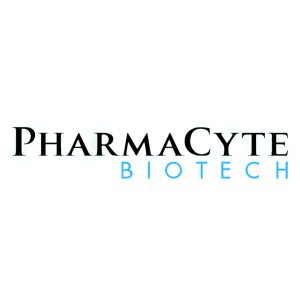PharmaCyte Biotech Reports Second Quarter 2021 Financial Results and Operational Highlights
Cash Position: PharmaCyte had approximately
Recent Q2 Highlights—Corporate:
-
Common stock was listed on
Nasdaq Capital Markets as the Company began trading as a Nasdaq-listed company
-
Closed on a
$15 -million
-
Closed on a
$70 -million
-
Company had warrant conversions of approximately
$10.7 million
- PharmaCyte expanded its Product Pipeline beyond its Cancer Program to include a Diabetes Program and a Malignant Ascites Program.
Recent Highlights—Pipeline Products:
- The Company’s capital raises allowed PharmaCyte to spend what was needed in Research and Development (R&D) expenses to perform the work required to have the FDA imposed clinical hold lifted. PharmaCyte will issue a 2021 year-end update to detail which tests/studies have been completed, which have commenced, and which remain for PharmaCyte to present to the FDA with updated data in its effort to lift the FDA’s clinical hold.
-
In
August 2021 , PharmaCyte announced its clinical trial product, CypCaps™ remains stable and active at 18 months after completing the 18-month timepoint of ongoing product stability testing required by theU.S. Food and Drug Administration (FDA).
-
In
September 2021 , the Company announced the first test results of the biocompatibility studies of its CypCaps clinical trial product candidate. These positive results were from an “In Vitro Complement Activation Study of Empty Cellulose Sulphate Capsules,” the same capsules PharmaCyte plans to use in its treatment to treat locally advanced, inoperable pancreatic cancer (LAPC). The first results showed that the capsule material does not activate a major line of the human body’s innate defense – the complement system.
-
In
September 2021 , PharmaCyte announced the results of a second FDA-required test of biocompatibility of its CypCaps product for the treatment of LAPC. The results showed that the empty capsule material is “non-hemolytic.” The data showed that the capsule material does not cause blood cells to lyse either after direct or indirect contact with blood. Moreover, it confirms prior data that was observed previously in animal models and previous clinical trials.
-
In
September 2021 , PharmaCyte announced the results from a third test of biocompatibility of its CypCaps product candidate for pancreatic cancer. The results showed that the empty capsule material is not “mutagenic.” A mutagen is a physical or chemical agent that permanently changes genetic material, usually DNA, in an organism and thus increases the frequency of mutations above the natural background level.
-
Since the close of PharmaCyte’s quarter ended
October 31, 2021 , the PharmaCyte announced that: (i) the empty capsule material that makes up its CypCaps pancreatic cancer product does not cause skin irritation, (ii) the commencement of a pivotal study to determine if PharmaCyte’s treatment for pancreatic cancer, which PharmaCyte plans to use for the treatment of LAPC—CypCaps combined with the cancer killing chemotherapy prodrug ifosfamide—can also delay the rate of production and accumulation of malignant ascites. This is fluid that accumulates in the abdominal cavity from various cancers, and (iii) the results of an additional, more detailed, analysis of the integration site of the cytochrome P450 2B1 gene from the Company’s genetically modified cell clone that it uses in PharmaCyte’s CypCaps product for the treatment of LAPC.
Recent Highlights—Financial:
During the three months ended
On
Other PharmaCyte expenses decreased by approximately
Operating expenses increased for the three months ended
PharmaCyte’s R&D expenses increased from the start of its fiscal year to about
To learn more about PharmaCyte’s pancreatic cancer treatment and how it works inside the body to treat locally advanced, inoperable pancreatic cancer, we encourage you to watch the company’s documentary video complete with medical animations at: https://www.PharmaCyte.com/Cancer
About
PharmaCyte’s therapy for cancer involves encapsulating genetically engineered human cells that convert an inactive chemotherapy drug into its active or “cancer-killing” form. For pancreatic cancer, these encapsulated cells are implanted in the blood supply to the patient’s tumor as close as possible to the site of the tumor. Once implanted, a chemotherapy drug that is normally activated in the liver (ifosfamide) is given intravenously at one-third the normal dose. The ifosfamide is carried by the circulatory system to where the encapsulated cells have been implanted. When the ifosfamide flows through pores in the capsules, the live cells inside act as a “bio-artificial liver” and activate the chemotherapy drug at the site of the cancer. This “targeted chemotherapy” has proven effective and safe to use in past clinical trials and we believe results in little to no treatment related side effects.
PharmaCyte’s therapy for Type 1 diabetes and insulin-dependent Type 2 diabetes involves encapsulating a human cell line that has been genetically engineered to produce and release insulin in response to the levels of blood sugar in the human body. The encapsulation of the cell line will be done using the Cell-in-a-Box technology. Once the encapsulated cells are implanted in a diabetic patient, we anticipate that they will function as a “bio-artificial pancreas” for purposes of insulin production.
Safe Harbor
This press release may contain forward-looking statements within the meaning of the Private Securities Litigation Reform Act of 1995 that express the current beliefs and expectations of the management of PharmaCyte. Any statements contained herein that do not describe historical facts are forward-looking statements that are subject to risks and uncertainties that could cause actual results, performance, and achievements to differ materially from those discussed in such forward-looking statements. Factors that could affect our actual results include our ability to raise the necessary capital to fund our operations and to find partners to supplement our capabilities and resources, our ability to satisfactorily address the issues raised by the FDA in order to have the clinical hold on our IND removed, as well as such other factors that are included in the periodic reports on Form 10-K and Form 10-Q that we file with the
More information about
View source version on businesswire.com: https://www.businesswire.com/news/home/20211215005364/en/
Investor Relations:
Dr.
Telephone: 917.595.2856
Email: InvestorRelations@PharmaCyte.com
Source:







